Extension lead
Everyone uses power extension leads in their home. They multiply our options for accessing the sockets in our home and, correspondingly, the wiring.
A modern home without an extension lead seems unreal: hardly anyone would want to do without their practicality and functionality.
If you are looking for a new extension lead, we will offer you a huge selection, as well as cable extensions and cable reels.
With regard to the latter we will also show you some useful ways to make use of their functionality.
Extension leads: nature and purpose
An extension lead is a long, flexible electrical cable with a plug at one end and a socket splitter (connector with sockets) at the other.
Extension leads are available in a variety of lengths. For households, extension leads are available from several centimetres to several metres long.
Long extension leads that can reach up to 100 meters in length are called cable reels.
The main purpose of an extension lead is to supply electrical power to places where it is inaccessible from a power outlet.
In addition to providing access to a power supply through its length, more consumers can be connected to the wiring by means of an extension lead, through sockets located in a plastic box called a connector, socket board or socket splitter.
Different types of extension lead
There are many different types of extension lead. Here we will mention some of them that you can find in the Elmark online store.
Cable extension leads are probably the most common and popular type. They are familiar with their typical plug and cable with a socket splitter or socket board which can have a variable number of sockets. In our online store you will find extension leads with 3 to 7 sockets.
Extension leads with a switch/button are a variation of the extension leads mentioned above. The difference with the standard extension lead model is the switch, which cuts off the circuit in the extension lead itself, while standard extension leads do not have this functionality.
Extension leads with short circuit protection provide improved safety for you and your appliances through their up-to-date protective devices. This way you can rest assured that even with in the event of a network overload or current surge, your electrical appliances will remain perfectly sound and the biggest advantage is that you do not have to unplug them every time there is a thunderstorm.
It is worth mentioning some types of extension lead which are increasingly entering our daily lives, such as:
- USB connector;
- Child protection extension lead;
- Built-in socket splitter;
- etc.
The difference between an extension lead and a cable extension
This difference must be clarified, as many people do not distinguish between the two.
An extension lead is a device to enable more than one consumer to be connected to the wiring in addition to extending and providing access to the electrical system.
The function of a cable extension is only to provide electricity in remote and inaccessible locations where there is no electrical outlet. Cable extensions usually have only one socket, so they are unsuitable for everyday use except in certain cases.
Cable reels: what we need to know about them
As explained earlier, there is a big difference between an extension lead and a cable extension. With regard to similarities, we should mention so-called cable reels.
A cable reel is a combination of an extension lead and a cable extension. In fact reels are extensions whose cables can reach lengths of 40-50 metres each and have more than one socket for connecting more than one consumer in remote locations.
Cable reels are suitable for repairs or construction work in inaccessible places where there is no power supply and electrical outlets.
Helpful tips to protect your extension lead from damage
An extension lead is as useful as it is hazardous, especially when used carelessly and negligently. There are cases where improper use of an extension lead can cause a fire.
You should therefore be fully aware of all good practices for using an extension lead and be as careful as possible when using it.
Be careful where you put an extension lead. Its location is very important for proper operation. Under no circumstances should it be placed under furniture or carpets. In addition, make sure that the extension lead is not located near to flammable materials.
Watch out for unusual signs. If you notice any strange or unusual signs when working with your extension lead, do not ignore them. For example, if the extension lead is hot while there are consumers connected to it, there is likely to be a problem.
Do not plug one extension lead into another. This is very important. This is a frequent mistake and it is dangerous. Connecting one extension lead to another can overload the electrical system. If you need more length or more sockets, get a sufficiently long extension lead or one with more sockets.
Check the lead for wear and tear. If you notice a worn or stripped cable or any uncovered area on your extension lead, take action immediately and stop using it. If not, it can lead to and electric shock which can have fatal consequences for you and your family.
Be careful when using it outdoors. If you want to use your extension lead outdoors, there are a few things to keep in mind. Firstly, make sure that the extension lead is certified for outdoor use. Secondly, before plugging anything into it, check its sockets carefully for any foreign objects and even liquids that may be inside. Thirdly, do not keep your extension lead on the ground while it is outdoors.
How to choose an extension lead
Most people do not realise how hazardous it can be to use the wrong type of extension lead in their home.
The electrical current that flows through the extension lead cable generates heat. If it exceeds a certain limit, it can overheat and melt the plastic cable sheath, causing short circuits and fires.
This is generally less likely to happen when you plug a unit and appliance directly into your wiring through the socket, as electrical equipment manufacturers put the right wires in the cable for the electric current that the appliance will use, reducing the accident risk to a minimum.
The problem comes when you use an unsuitable extension lead to extend your access to your wiring, as it may exceed the admissible voltage in the appliance. This can cause serious problems.
You should therefore make sure you are familiar with the requirements in your appliance manufacturer’s specifications and then choose the right extension lead.
-
To the product
 CABLE REEL GEH-39 H07RN-F 3X1.5 27+3M IP44 47961
CABLE REEL GEH-39 H07RN-F 3X1.5 27+3M IP44 47961Rated current 16 A Number of sockets 1 Cable length 27+3 Warranty 
-
-
To the product
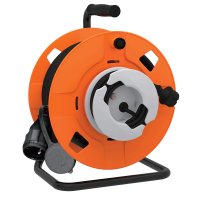 CABLE REEL GEH-40 H07RN-F 3X1.5 47+3M IP44 47962
CABLE REEL GEH-40 H07RN-F 3X1.5 47+3M IP44 47962Rated current 16 A Number of sockets 1 Cable length 47+3 Warranty 
-
-
NEW
To the product

-
NEW
To the product
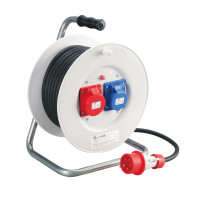
-
NEW
To the product

-
NEW
To the product

-
NEW
To the product
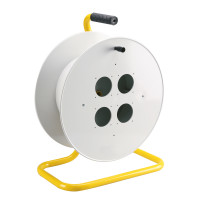
-
NEW
To the product
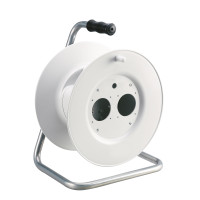
-
To the product
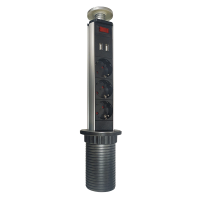 MULTIPLUG TOWER 8 MOD. SET, ELOXAL 47006
MULTIPLUG TOWER 8 MOD. SET, ELOXAL 47006Rated current 16 A Number of sockets 3+USBx2+ключ Cable length 2м Warranty 
-
-
Limited offer
To the product
 TOWER MULTIPLUGS 6 MODULES BLACK 47005
TOWER MULTIPLUGS 6 MODULES BLACK 47005Rated current 16 A Number of sockets 3 Cable length Whitout cable Warranty 
-
-
Limited offer
To the product
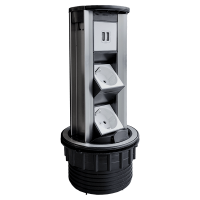 TOWER MULTIPLUGS 6 MODULES INOX 47004
TOWER MULTIPLUGS 6 MODULES INOX 47004Rated current 16 A Number of sockets 2+USBx2 Cable length Whitout cable Warranty 
-
-
To the product
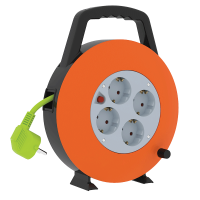 CABLE REEL H05VV-F 3Х1.5 10М 47911
CABLE REEL H05VV-F 3Х1.5 10М 47911Rated current 16 A Number of sockets 4 Cable length 10 m Warranty 
-
-
To the product
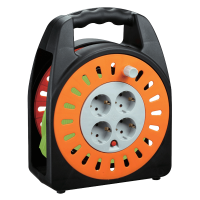 CABLE REEL H05VV-F 3Х1.5 20М 47921
CABLE REEL H05VV-F 3Х1.5 20М 47921Rated current 16 A Number of sockets 4 Cable length 20 m Warranty 
-
-
To the product
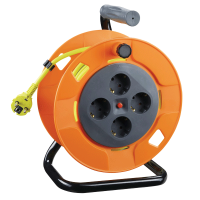 CABLE REEL H05VV-F 3Х1.5 25М 47927
CABLE REEL H05VV-F 3Х1.5 25М 47927Rated current 16 A Number of sockets 4 Cable length 25 m Warranty 
-
-
To the product
 CABLE REEL H05VV-F 3Х1.5 40М 47940
CABLE REEL H05VV-F 3Х1.5 40М 47940Rated current 16 A Number of sockets 4 Cable length 40 m Warranty 
-
-
To the product
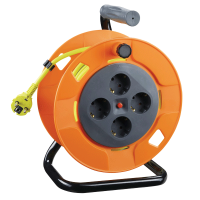 CABLE REEL H05VV-F 3Х1.5 50М 47950
CABLE REEL H05VV-F 3Х1.5 50М 47950Rated current 16 A Number of sockets 4 Cable length 50 m Warranty 
-
-
To the product
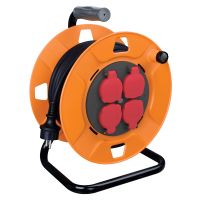 IP44
IP44 -
To the product
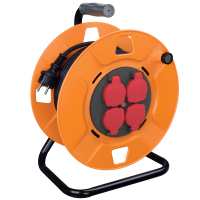 IP44
IP44 -
To the product

-
To the product
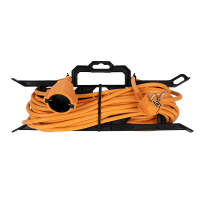 EXTENSION CORD 10M H05VV-F 3G1.5mm2 ORANGE 47333
EXTENSION CORD 10M H05VV-F 3G1.5mm2 ORANGE 47333Rated current 16 A Number of sockets 1 Cable length 10 m Warranty 
-
Prices are VAT inclusive





